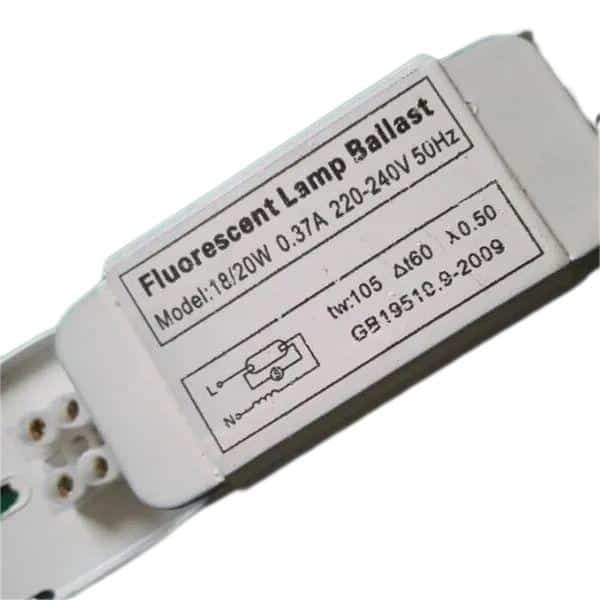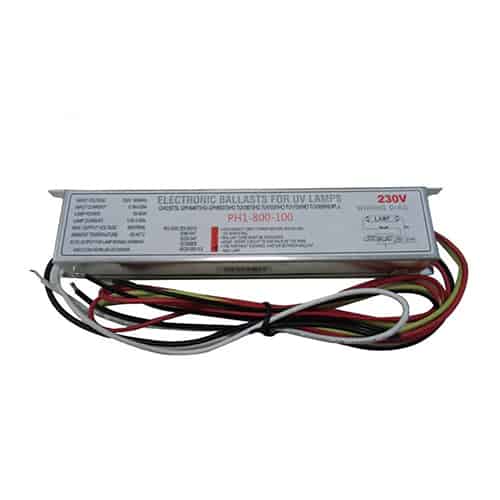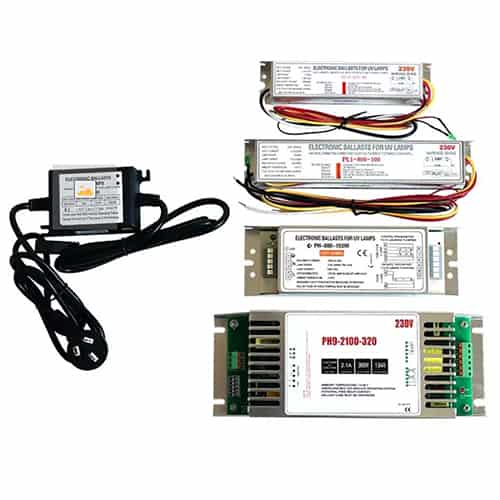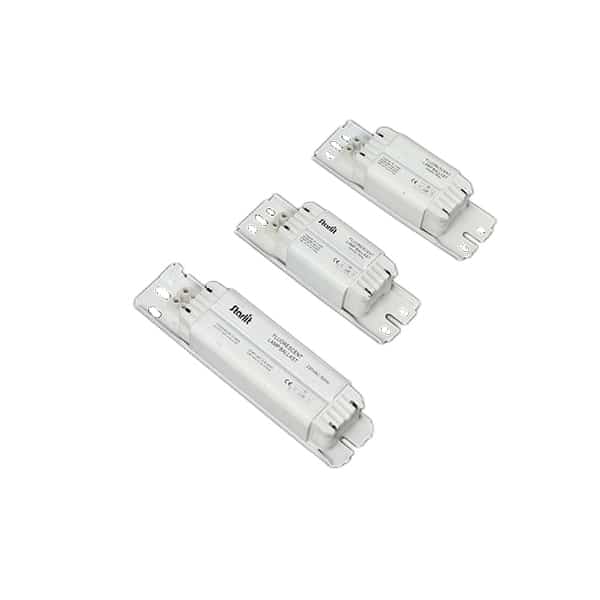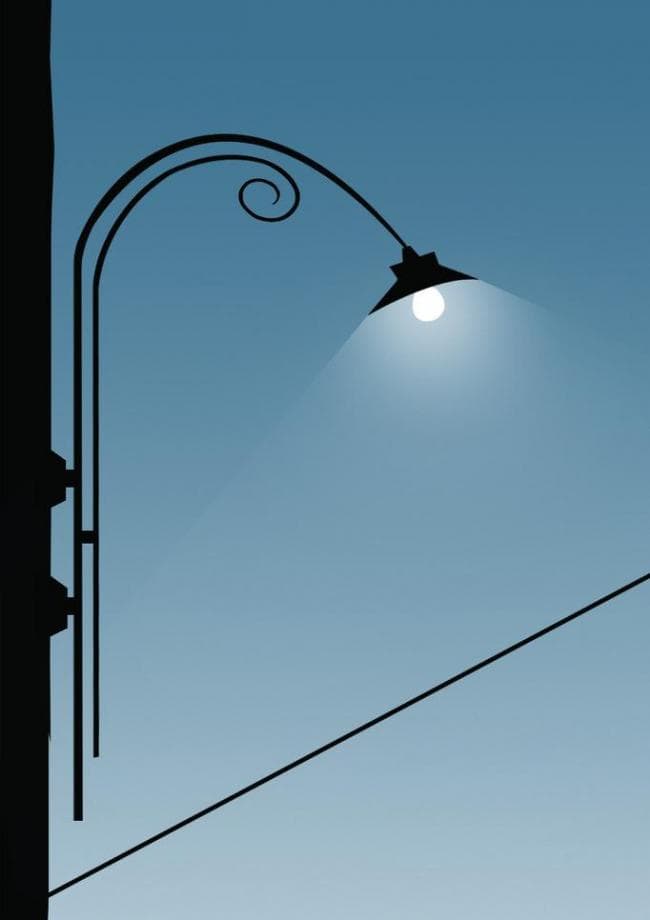Selecting the right lamlp ballast for your fluorescent lighting is critical. Using an 18W ballast with a 20W T8 fluorescent tube might seem like a small difference, but it can cause issues with performance, lifespan, and possibly damage to your lighting system.
No, you should not use an 18W ballast for a 20W T8 tube. The difference in power between the ballast and the tube can cause both to underperform and potentially be damaged.
What Is a Ballast and Why Is It Important?
Fluorescent lamps rely on light ballasts to regulate the current and provide the correct voltage to ignite the tube and keep it operating smoothly. Ballasts serve two main functions: they first provide the necessary starting voltage and then regulate the current flow once the tube is lit. Without the right ballast, fluorescent tubes would either not ignite or could overheat, leading to damage. This makes selecting the right ballast a vital decision when installing or maintaining your lighting system.
Ballasts are designed for specific wattages. For example, a 20W T8 fluorescent tube is built to work with a ballast designed to handle a 20W load. When the ballast and the tube’s wattages are not aligned, performance suffers. An 18W ballast simply doesn’t provide the right amount of energy for a 20W tube. This mismatch can cause several issues in your lighting system, which can lead to inefficiency and ultimately shorten the lifespan of your lighting.
What Happens if You Use an 18W Ballast with a 20W Tube?
Using an 18W ballast for a 20W T8 tube can result in a number of problems. One of the most immediate issues is that the ballast will not deliver enough current to the tube. The result is that your fluorescent tube may flicker, provide dim or inconsistent lighting, or fail to start properly.
Even if the light manages to turn on, it will not be operating at its full capacity. The light produced will be weaker than it should be, which can make your space feel under-lit. Over time, the tube may burn out prematurely due to the constant strain of operating under lower-than-recommended power.
There’s also the risk of the ballast overheating. Since the 18W ballast is working harder to try and power a tube that needs more energy than it can supply, it may overheat, which can damage the ballast itself or even create a fire hazard in extreme cases.
In professional environments like offices or industrial spaces, mismatched ballasts can lead to inefficiency and require frequent maintenance. For example, a poorly performing ballast in an office space can lead to insufficient lighting, which may decrease productivity and cause eyestrain for workers. In industrial settings, where consistent and strong lighting is essential for safety and efficiency, such mismatches could lead to bigger operational problems.
Why Is Wattage Compatibility So Important?
When a ballast is rated for 18W, it’s designed to deliver a specific amount of voltage and current to a lamp that requires 18W of power. A 20W fluorescent tube, however, demands more power to operate properly. Using an 18W ballast for a 20W tube means the ballast is underpowered and the tube won’t receive the energy it needs for optimal operation.
The wattage compatibility between a ballast and a tube ensures that the lighting system runs efficiently. An exact match between ballast and tube wattage ensures that the tube will start reliably, maintain its brightness throughout its lifespan, and perform without flickering or dimming. It also guarantees that the ballast will operate without overloading, which could extend its lifespan.
In contrast, using an underpowered ballast, such as an 18W ballast for a 20W tube, compromises the entire lighting system. The mismatch forces both the tube and ballast to work outside their optimal performance range, which can shorten their operational lifetimes, cause inefficiency, and increase the risk of safety issues.
Risks of Using an Incorrect Ballast
There are several risks associated with using an incorrect ballast, such as an 18W ballast for a 20W fluorescent tube. First, there’s the issue of safety. An underpowered ballast can overheat, especially if it is forced to operate for extended periods under strain. This overheating can lead to damage not only to the ballast but also to the tube, the fixture, and even the surrounding area if it reaches dangerous temperatures.
In addition, the efficiency of the lighting system is drastically reduced. Since the ballast isn’t providing enough power, the tube can’t function at its full potential. This results in a dimmer light output, which can affect the overall brightness in a space. This is particularly problematic in environments where lighting quality is critical, such as hospitals, schools, or factories, where proper lighting is necessary for safety and productivity.
Over time, the lifespan of both the tube and the ballast will be shortened. Operating in a mismatch situation, the tube will wear out more quickly, leading to increased maintenance costs. In commercial or industrial settings, where dozens or hundreds of lights may be in use, this can result in significant operational downtime and added expenses for replacement parts and labor.
Finally, if you are running a business or operating in a professional setting, having poor lighting due to mismatched components can affect the quality of your services or products. Imagine a retail store where the lighting is consistently dim—customers might feel the store is poorly maintained or may have difficulty seeing products clearly, which could hurt sales.
How to Ensure You Use the Correct Ballast
To avoid these risks, it’s essential to match the ballast to the wattage of the fluorescent tube. For a 20W T8 fluorescent tube, choose a ballast that is rated for 20W or higher. Ballasts typically come with clear labeling that indicates the wattage they support, so always double-check this before installing or replacing one in your system.
If you’re unsure which ballast to use, consult the manufacturer’s specifications or speak with a lighting professional. It’s better to take the time to ensure compatibility than to deal with the risks associated with an incorrect pairing.
What Are Your Alternatives?
If you find that you have an 18W ballast and a 20W T8 tube, it’s best to replace the ballast with one rated for 20W to ensure compatibility and performance.
Alternatively, if you’re looking for an upgrade, consider switching to LED lighting. LED lights do not require ballasts, and they are more energy-efficient and longer-lasting than fluorescent tubes. While the upfront cost of switching to LED might be higher, the long-term savings in energy and maintenance make it a smart investment.
Final Words:
Make sure you use a light ballast that matches the wattage of your fluorescent tube to be safe and efficient. Don’t use an 18W ballast with a 20W T8 fluorescent tube, or you’ll have a host of problems, including safety issues.


